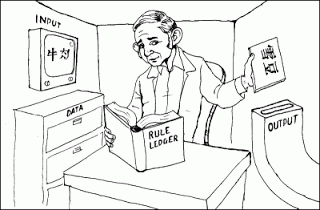Risk Transfer is not a Transfer of Risk
As an actuary risk is my bread and butter. So, I spend a lot of time thinking about it. With a background in philosophy and physics, I try to approach claims critically and realistically.
One of the major ways of discussing actuarial science and insurance contracts involves discussion of “risk transfers.” We use phrases such as “the insurer assumes the risk” or “the insured pays for transferring the risk” and so forth. I am going to dispute the natural reading of those phrases because they are inherently misleading.
Consider a very simple insurance contract, something like property insurance. When the insured purchases the policy he receives a contract containing information about the various claims he has against the insurance company. If his property is damaged or destroyed, he can make a claim and receive certain benefits.
Now the way that we talk is that the insurer is receiving premiums because he assumes the risk. The risk can be given a price and the insurer charges him for taking it off his hands. While this is a typical way that it is explained, it is obviously wrong.
Supposed that the insured’s property is utterly destroyed and he makes a claim. The insurance company after review of the claim writes him a check and settles the contractual obligations.
The first thing to note is that the insured still suffered a real financial loss. His property was really destroyed. This means that he still “possessed” the risk he was insuring. Moreover, if the company was insolvent, the insured may not have even received any benefits in spite of the “risk transfer.”
What is really going on is that the insured owns some property. As the owner there are certain risks associated with maintaining it on his personal balance sheet. Should it be destroyed or damaged that is going to have a financial impact on his net worth. This is the reality of ownership.
When he enters into an insurance contract with another party, the insurer sells him a claim against his balance sheet. This enters on the liability side. The insurer charges him for this claim against the insurer’s assets, similar to how you might charge someone to rent your house. The insured has a claim to make use of the insurer’s assets under certain contingent circumstances.
Now, there are risks associated with this insurance contracts for the insurer. He may end up having to pay out a claim, when he would prefer to maintain his capital. However, this risk is not identical to or coextensive with the risk that the owner of the insured property possesses.
There is no transfer of risk in an insurance agreement. There is a risky circumstance which if realized allows a claim to be initiated against the insurer. Insurance is fundamentally about selling a claim against the insurer’s assets that produces an obligation for him to pay the claimant under certain circumstances.
 In 1980 John Searle proposed a thought experiment in the realm of computer science concerning artificial intelligence. He asked people to consider a man in a closed room with an opening for papers coming in and another for papers going out. The papers he would receive were in Chinese and he was not able to read Chinese but had a well-defined rule book for translating the Chinese inputs into outputs. The thought experiment was meant to show that a computer could follow clearly defined rules for translating inputs into outputs without actually understanding anything about the meaning of the inputs or outputs, something Searle took as a property of a real mind. I would like to propose a similar thought experiment, but this time in the realm of finance and economics concerning Bitcoins.
In 1980 John Searle proposed a thought experiment in the realm of computer science concerning artificial intelligence. He asked people to consider a man in a closed room with an opening for papers coming in and another for papers going out. The papers he would receive were in Chinese and he was not able to read Chinese but had a well-defined rule book for translating the Chinese inputs into outputs. The thought experiment was meant to show that a computer could follow clearly defined rules for translating inputs into outputs without actually understanding anything about the meaning of the inputs or outputs, something Searle took as a property of a real mind. I would like to propose a similar thought experiment, but this time in the realm of finance and economics concerning Bitcoins.